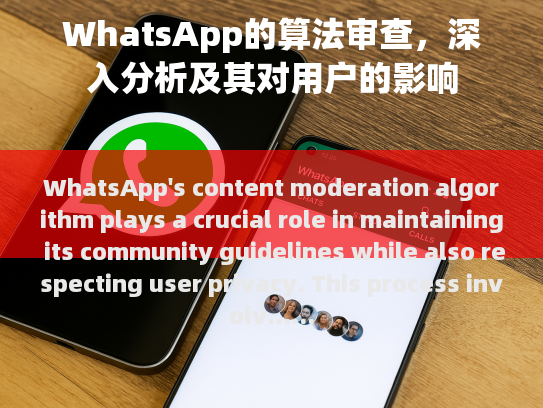WhatsApp's content moderation algorithm plays a crucial role in maintaining its community guidelines while also respecting user privacy. This process involves identifying inappropriate content based on predefined rules and ensuring that users have control over what is posted or shared within the app. The impact of this system can be significant for both the platform and its users. For instance, it affects the quality of communication, user experience, and overall engagement with the platform. Understanding how WhatsApp handles complaints and disputes regarding violations helps to gauge the effectiveness of their approach towards upholding standards of behavior among its members. It’s important to note that any changes to the algorithm must undergo rigorous testing and evaluation before being implemented to ensure they don’t inadvertently harm user trust or lead to unintended consequences. WhatsApp uses an intricate content moderation system to filter out unwanted information while preserving user rights. Their algorithms help maintain compliance with guidelines and enhance user interaction positively. However, these processes need careful oversight to avoid missteps that could undermine public confidence in the service.
Today’s Digital Age: Communication Tools & WhatsApp
Communication tools have become essential in our contemporary society, facilitating connections with friends, families, colleagues, and even strangers worldwide. Among the myriad platforms, WhatsApp stands out as one of the most popular messaging applications thanks to its simplicity, ease of use, and extensive array of features. Despite its widespread popularity, WhatsApp grapples with the challenge of maintaining user trust through effective content moderation.

Content Moderation
Content moderation is the practice of filtering out inappropriate or offensive content from online communications. In the context of WhatsApp, this involves adhering to the app’s terms of service, including guidelines against harassment, hate speech, and misinformation. The objective is twofold: to protect users from harmful content and to create an atmosphere conducive to meaningful and respectful discourse.
WhatsApp's Approach to Content Moderation
WhatsApp uses a sophisticated algorithmic system to detect and remove inappropriate content. This approach incorporates both human oversight and machine learning techniques to analyze text and images posted by users. New rules are rigorously tested to ensure accuracy before implementation across all platforms.
Algorithm Analysis
The algorithm evaluates various factors such as language patterns, tone, and context. For example, if a message includes derogatory language targeted at particular groups, it triggers automated alerts designed to flag potentially problematic content. Human moderators review these flagged messages, making decisions based on their assessment of appropriateness.
Challenges in Implementing Effective Content Moderation
Due to its wide reach and diverse user base, WhatsApp faces several hurdles in achieving effective content moderation:
- Balancing Freedom of Speech with Community Standards
- Striking a balance between protecting free expression and enforcing community norms poses significant challenges.
- Protecting individuals’ right to express themselves freely while ensuring adherence to community standards requires careful consideration.
- Addressing Misinformation and Fake News
- Preventing the spread of misleading information necessitates countering disinformation campaigns and propagandistic narratives intended to disseminate harmful narratives.
- Maintaining the integrity of reported facts and avoiding echo chambers is crucial for enhancing the overall safety and reliability of the platform.
- Managing User Behavior
- Relying on human judgment for subjective matters, AI-driven analytics provide quick and accurate processing of large datasets.
- Combining human expertise with AI helps streamline proactive measures against emerging threats and mitigates risks efficiently.
- Maintaining Privacy and Security
Ensuring compliance with personal information handling and conducting thorough audits helps build user trust and reduces privacy concerns related to surveillance.
Role of Technology in Enhancing Content Moderation
Technology significantly enhances content moderation capabilities. Machine learning algorithms continually refine detection rates and minimize false positives through exposure to past examples. Natural Language Processing (NLP) models aid in sentiment analysis and understanding complex language nuances, enabling faster responses and more nuanced decision-making regarding content removals and warnings.
Automation and Human Oversight
AI automates repetitive tasks like spam filters, image recognition systems, and threat assessments, thereby freeing up human moderators to concentrate on critical cases involving emotional judgment. Combining technology with human oversight ensures a balanced and ethical approach to content moderation.
Conclusion
As WhatsApp evolves, so too does its strategy for content moderation. Fostering innovation while prioritizing user safety, combating misinformation, and employing advanced technologies are vital for maintaining a positive and safe environment on the platform. Through transparency, accountability, and continuous improvements, WhatsApp can remain a trusted tool for global communication, safeguarding its users from harmful content and fostering healthier dialogues.
